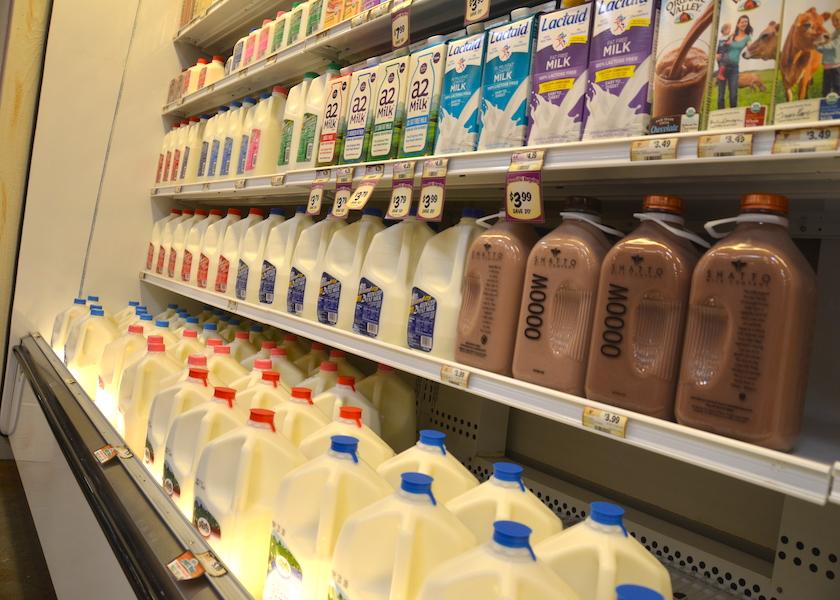What Does the Increase to SNAP Benefits Mean for Dairy?

On Monday, the Biden administration revised the Supplemental Nutrition Assistance Program (SNAP) benefits to Americans. In a nutshell, the re-evaluation of the Thrifty Food Plan, released by the U.S. Department of Agriculture (USDA) gives the estimated 42 million SNAP-users more than $36 per month. This payment change begins on Oct. 1.
SNAP, the largest federal nutrition assistance program, helps feed one in eight Americans and during the COVID-19 pandemic, food insecurity dramatically increased in the United States. SNAP provides benefits to eligible, low-income individuals and families via an Electronic Benefits Transfer card that can be used as a debit card to purchase eligible food in authorized retail food stores.
According to Paul Bleiberg, Senior Vice President of Government Relations with National Milk Producers Federations (NMPF), these newly released changes should increase dairy consumption and reduce food insecurity. “We know that dairy consumption among SNAP users is fairly large, as the program moves the largest volume of dairy products of any federal nutrition program,” Bleiberg says. “The increase in SNAP benefits will increase purchasing power for SNAP users, helping to combat food insecurity, and will in turn positively increase dairy consumption.”
Matt Herrick, Senior Vice President of Public Affairs and Communications with the International Dairy Foods Association (IDFA) and the Executive Director of the IDFA Foundation concurs with NMPF. Herrick says that comprehending the SNAP program is essential to understanding the benefit of increasing its benefits to millions of Americans. “There are days of the week where it's hard for some Americans to access enough food because they don't have the money to do so,” he states. “This is where SNAP comes in and provides those individuals and those families who qualify with additional resources to go into a grocery store and market and purchase additional food.”
Herrick notes that SNAP is an economic driver, supporting jobs – from those that work to produce it, market it, package it and sell it. For every dollar spent in SNAP, the USDA estimates that $1.50 is returned to the economy. USDA research illustrates that two of the top five purchases include dairy, with that being milk and cheese. “SNAP program participants are buying a lot of milk,” Herrick states. “And the reason they're buying a lot of milk is that they see milk as a nutritious product.”
IDFA has conducted research with Morning Consult in 2019, diving into Americans’ fluid milk preferences at home and school, including SNAP participants. “More than 90% of SNAP participants saw fluid milk as a healthy, nutritious product,” he says.
The Farmers to Families Food Box Program was discontinued in May, after helping deliver nearly 173 million boxes of food in 2020 and 2021 and played a helping hand to curb the rising hunger crisis in America. In 2021 as the Food Box program ended, SNAP benefit levels nearly doubled, according to IDFA. “Increased SNAP benefits led to a lower hunger rate,” Herrick says. “Those in need were able to go out and purchase more food for their families.” Food insecurity dropped to 9% among adults, according Census data, a 35% reduction.
Now the federal government is reevaluating both the current state of the pandemic and the economy. The pandemic-related increases that led SNAP benefit levels to nearly double in 2021 are due to expire later this year and in early in 2022. Considering the government has the authority to increase SNAP benefit levels, they acted to do so, especially knowing the current increases led to reductions in hunger rates. “The government is making sure folks have adequate access to resources to be able to buy the food that they need,” Herrick states.
Another point worth mentioning is that similar purchasing habits are documented from SNAP benefit users and non-benefit users. For instance, the USDA research report in 2016 showed that fluid milk is the number one purchase for non-SNAP users and number two for SNAP users. “So, what I would expect would happen is this increase in SNAP benefits will increase the purchase of those dairy products.”
One way to increase SNAP purchases of dairy is through incentives, said Herrick. The Healthy Fluid Milk Incentive Program is a pilot program measuring how to use incentives offered by USDA to ensure people who want to purchase dairy have a little extra money to do so. The USDA is working with Baylor University in Texas with this pilot program, measuring its success rate, to in fact see if these incentives are working out effectively. IDFA believes that the incentives will work as well as they have done with fruits and vegetables, and they are hoping to see more resources put towards these kinds of incentives programs. “Let's empower folks to make the right decisions with the right resources at their availability,” Herrick states.







